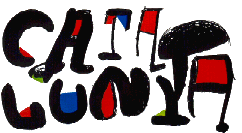

| [Welcome Index] | [Change language] |
|
STONES WITH
A TALE TO TALL
As you travel round Catalonia, it's well worth taking your time. A visit to Empúries, on the Costa Brava, will conjure up the atmosphere of classical Greece. The Greek colonizers, and their Roman successors, left behind a rich collection of sculptures and ceramics here and just a short distance away is the iberian settlement of Ullastret where you can stroll in the shadow of ancient towering walls. If you're staying on the Costa Daurada, make sure you visit the Roman city of Tarraco, present-day Tarragona, with its wealth of Roman remains. Or maybe you find the medieval period more exciting, with its learned monks, its knights in shining armour, and its merchant adventurers? Then you've come to the right place, because the personality of Catalonia was formed in the Middle Ages. This is why, dotted everywhere across our plains and mountains, you will find ancient buildings dating from the 9th to the 14th century in pre-Romanesque and Gothic style. Among the most remarkable are the monastery of Sant Pere de Rodes, overlooking the sea on the Costa Brava, and farther inland the monastery of Santa Maria de Ripoll and the three Cistercian monasteries of Santa Maria de Poblet, Santes Creus and Vallbona de les Monges, all important centres of culture and art in the Middle Ages. The cities of Girona, Vic, Barcelona, Tarragona, Tortosa and Lleida all have magnificent cathedrals. Girona cathedral is famous for its single nave - the widest Gothic nave in Europe. Other handsome medieval buildings are the current, or former, homes of government institutions. Examples are the Paeria in Lleida and the Palace of the Generalitat in Barcelona, which is the seat of the present-day Catalan government. All these ancient stones will tell you tales of days gone by when Catalan merchants sailed all over the Mediterranean and catalan men-of-arms controlled many places around its shores. You will also be struck
by the beauty and originality of the turn-of-the-century buildings designed
in Modernist style, the characteristically Catalan version of Art Nouveau
which was all the vogue in Europe. It is particularly intriguing to see
how many Modernist-style wine cellars-also known as "wine cathedrals"-
were built in the rural areas, and to discover the Modernist-style factories
which bear witness to the industrial strength of Catalonia in the wake
of the Industrial Revolution. Barcelona has more Art Nouveau buildings
than any other city in the world. No wonder it was the birthplace of Antoni
Gaudí! And today the innovative tradition of Catalan architecture
remains very much alive. |